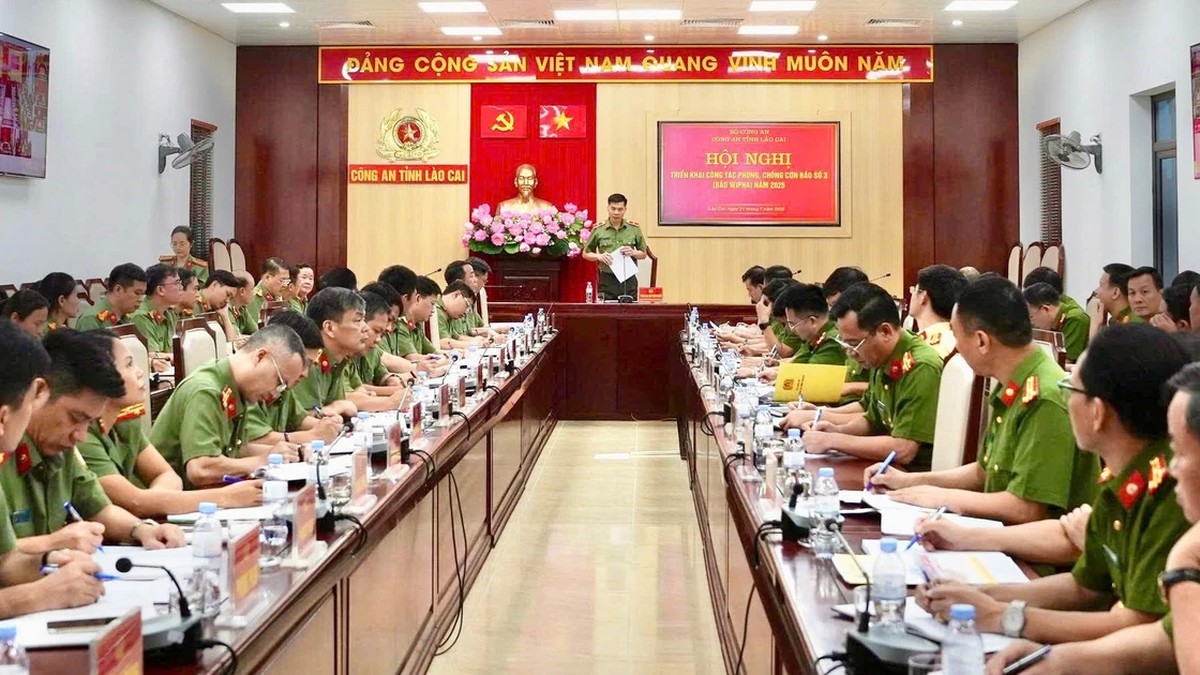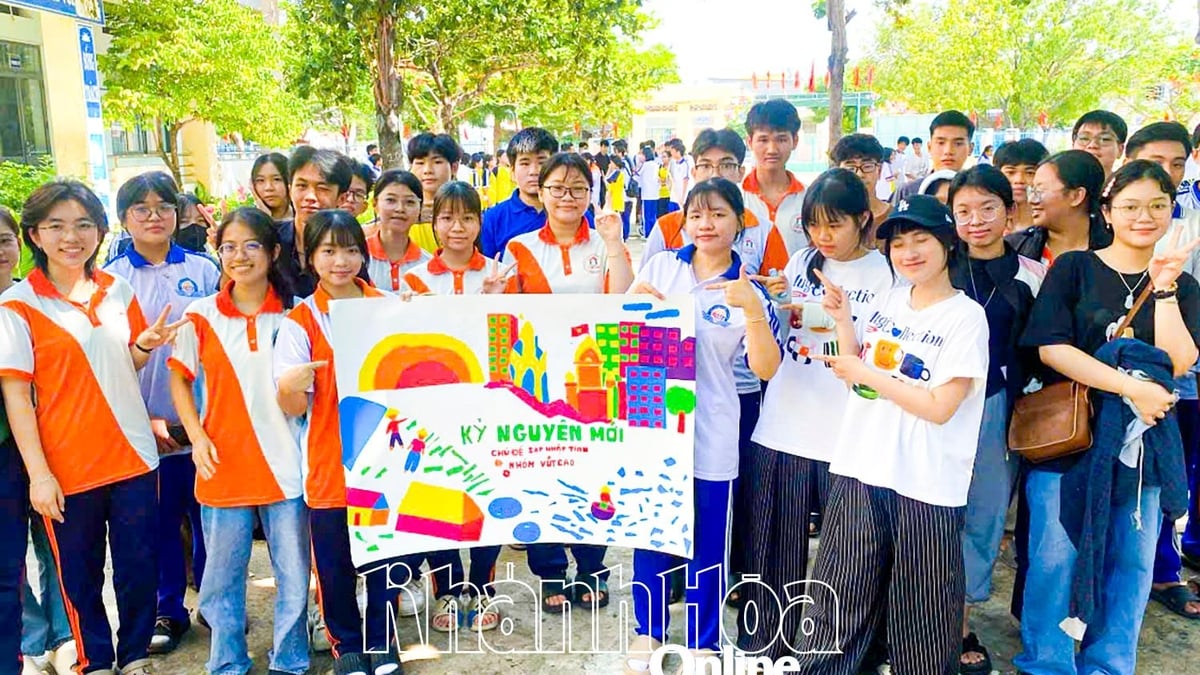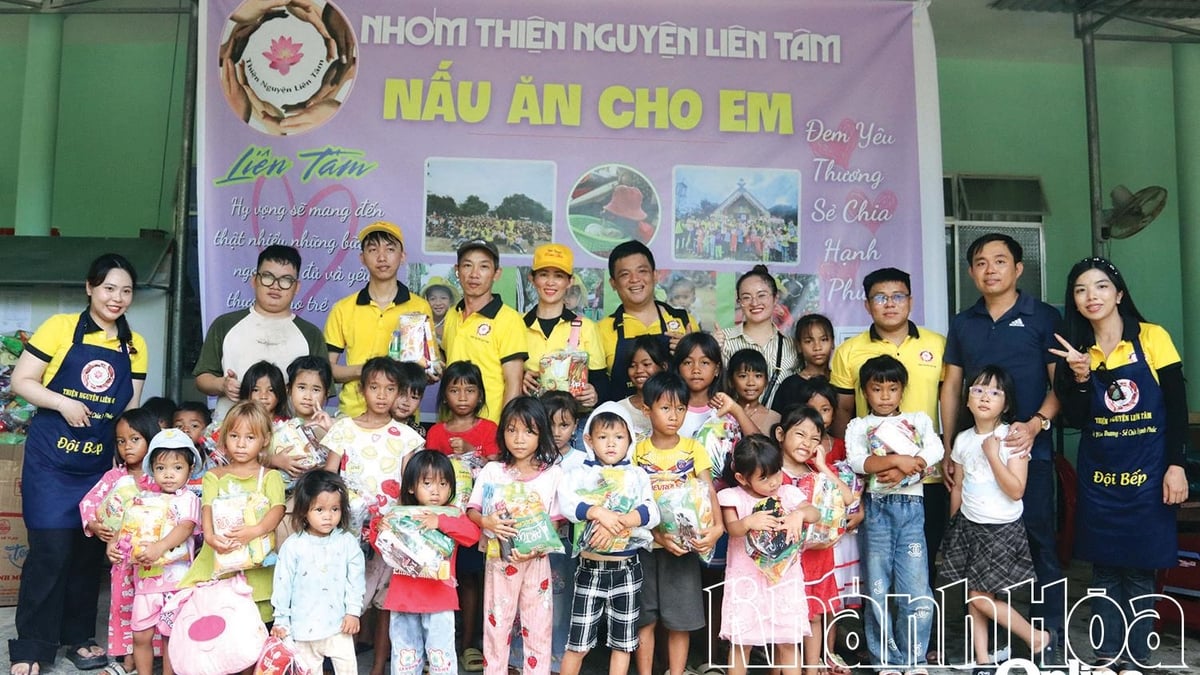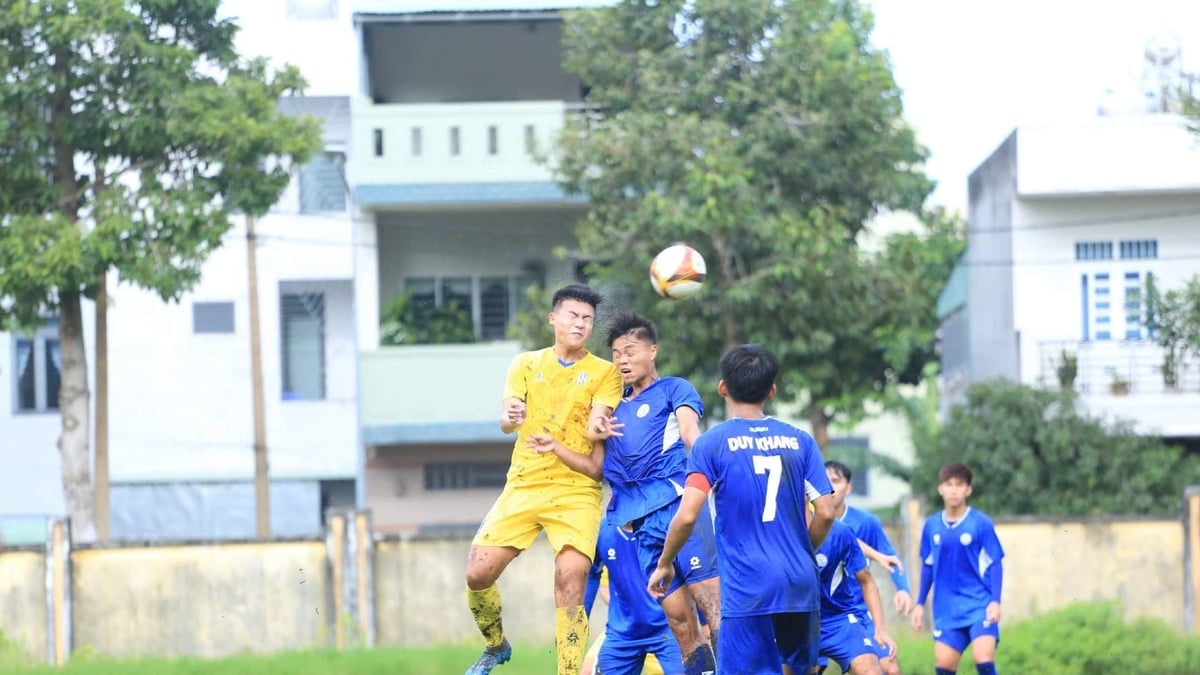People from Xa Bang and Cu Bi communes, Chau Duc district, Ba Ria-Vung Tau province welcomed me in front of the Xa Bang Rubber Plantation headquarters with sunburnt smiles, strong hugs and a strong Quang Tri accent: "Con vo khi mo ri, my hometown is now outside, stay and have dinner with the people". I was filled with the emotions of a Quang Tri native visiting a fellow countryman in a village in the Southeast region.
" Without Quang Tri people, there is Xa Bang Rubber Plantation"
“In 1977, Quang Tri people came to this Xa Bang land to create today's Xa Bang Rubber Farm”, many leaders of Dong Nai Rubber Company and Xa Bang people confirmed to us.

Mr. Nguyen Chon Loc, Chairman of the Quang Tri Association in Xa Bang commune, recounted his first days of starting a business - Photo: MT
Before 1975, Xa Bang was a branch of the French Binh Ba Rubber Plantation, with an area of about 300 hectares. Some Quang Tri people were recruited by the plantation owner to work in their hometown. During the period from 1972 to 1975, Xa Bang became a "blank area" with scattered residents. After the State took over to restore production, 24 families from Don Que village, Hai Que commune, Hai Lang district, joined Xa Bang commune.
Mr. Hoang Phuoc Luat (87 years old), Bau Sen hamlet, Xa Bang commune, was one of 24 families from Don Que village to Xa Bang in February 1977. Mr. Luat recalled: At that time, my hometown Quang Tri was very difficult. At that time, I met Mr. Le Sa Ky, a native of Bich La village, Trieu Phong district. Mr. Ky (Director of Dong Nai Rubber Company) said that if anyone wanted to go to the South to start a business, he would accept them as workers at Dong Nai rubber. So I was able to persuade 24 families with nearly 200 workers to go to the South.
Mr. Ky took several families to the rubber workers' team in Xa Bang commune. This team belonged to Binh Ba Farm of Dong Nai Rubber Company with a few dozen unskilled workers planting and caring for rubber trees. After receiving nearly 200 workers from Quang Tri in February, in March 1977, Xa Bang Rubber Farm was established with 80% of the workers being from Quang Tri.
That is why there is a story that “only with Quang Tri people can there be Xa Bang Rubber Farm”. Another interesting thing is that right after the establishment of Xa Bang Rubber Farm, Mr. Hoang Phuoc Luat was assigned as the head of the production team and only two years later he became the Deputy Director of Xa Bang Rubber Farm.
Mr. Nguyen Chon Loc, Vice Chairman of the Quang Tri Association of Chau Duc District, Ba Ria - Vung Tau Province, said: “The time when the largest number of Quang Tri people came to Xa Bang was in 1977 - 1980, the most populous villages were Don Que, Co Luy, Hoi Yen in Hai Lang District and Le Xuyen Village, Trieu Trach Commune, Trieu Phong District. These villages have now built village churches to worship the pioneers of their homeland, expressing the spirit of "remembering the source when leaving home".
At that time, to be recruited as workers, everyone had to go through a land reclamation contract, each family received at least 1 hectare of forest land to reclaim with the amount of money received being 200 VND/ha. Most people were not familiar with the work of clearing vegetation, planting and caring for rubber trees, but because they were diligent, hard-working, and both studying and working, Quang Tri people overcame the initial difficulties to gradually become proficient at the job.
Rubber forest named after Uncle Ba Le Duan
Rarely is there a locality like Xa Bang commune that was honored to be visited by General Secretary Le Duan twice in 1982. This proves the importance of the land favorable for rubber tree development and General Secretary Le Duan's brilliant vision for the future "white gold" product.

A corner of Cu Bi commune with lush rubber forest - Photo: MT
At the Vietnam Rubber Industry Group, there are still many valuable documents about the wise, timely, and strategic directions of General Secretary Le Duan for the development of the Vietnamese rubber industry.
A document records the event as follows: in 1945, following the invading expeditionary army, French capitalist companies returned to Vietnam and rubber exploitation became one of the important policies applied. The Southern Federation of Trade Unions set out specific tasks for rubber federations to open a "rubber war front" to sabotage the enemy's economy. 100% of plantations in the Southeast and Central Highlands organized rubber sabotage.
However, at the Conference of Workers of the Southern Region (May 5-6, 1948), after listening to the report of the Southern Federation of Trade Unions on the results of the "rubber war front", Secretary of the Southern Regional Party Committee Le Duan, besides praising the achievements, requested to change the enemy's economic sabotage methods.
He said: “Rubber is a national resource, built by the blood and sweat of workers. When we gain independence, it will be a huge source of wealth to enrich the country. I propose that from now on, the destruction of rubber plantations will not be done by burning orchards, cutting or stripping tree bark, but by reducing production speed, reducing the yield of finished products and profits of French capital, such as smashing latex cups, breaking latex troughs, burning latex, pouring latex on the ground, ambushing and burning rubber convoys from plantations to Saigon for export.”
The direction of the Secretary of the Southern Party Committee, Le Duan, promptly oriented the economic sabotage activities of the Southern army and people not only in the rubber sector but also in other economic sectors afterwards. Thanks to that, after the complete liberation of the South, we took over and managed nearly 45,000 hectares of rubber, creating the initial foundation for developing rubber into one of the key economic sectors later.
Mr. Nguyen Thanh Ba, Cu Bi commune, recalled: In 1983, the first time he visited Xa Bang, Cu Bi, Uncle Le Duan visited a number of workers' families, including mine. Knowing that I was from Quang Tri, the General Secretary encouraged my family to strive to build a farm and work hard to make a living, raise our children to become useful people, then he called my wife and children to take a souvenir photo together.
Before parting, General Secretary Le Duan advised everyone: Quang Tri people have a tradition of courage, endurance, hard work, and not retreating in the face of hardship. People must use this tradition to build Xa Bang and Cu Bi into model rubber plantations, where workers' families can have a prosperous, happy, civilized and progressive life. Following the General Secretary's words, Xa Bang Rubber Plantation strived to achieve the title of Labor Hero in 1985.
Mr. Hoang Phuoc Luat, former Deputy Director of Xa Bang Rubber Plantation, told the following story: In 1982, the second time General Secretary Le Duan visited the South and visited Xa Bang Rubber Plantation, Mr. Ba said: I am very happy to see the changes in Xa Bang, Cu Bi and Quang Tri people in a short time. Remember, from now on, rubber trees will play an important role in economic development and national construction. Therefore, this type of tree must be filled in the barren land until there is no more land to grow.
General Secretary Le Duan emphasized the phrase “there is no more land to plant”. And now in Xa Bang and Cu Bi communes, there is no more land to plant rubber trees. Mr. Hoang Phuoc Luat, who was then the production team leader of Xa Bang Rubber Plantation, stood up and promised: “Xa Bang Rubber Plantation in general and the people of Quang Tri in particular are determined to fulfill the wishes of General Secretary Le Duan”.
True to his word, Mr. Luat chose a barren area of about 10 hectares to carry out the reclamation work. He called the team leaders to assign specific tasks and mobilized more than 1,000 workers to participate in the reclamation, assigning each worker to plant 5 rubber trees. To remember the advice of General Secretary Le Duan, the collective of cadres and workers of Xa Bang Rubber Plantation unanimously named this area: Uncle Ba Le Duan Rubber Forest.
Warm fellow countrymen
Every spring, the Quang Tri Association in Xa Bang commune organizes a meeting for fellow countrymen who are working and living far from home. And as always, hundreds of Quang Tri people from many places come to attend this warm meeting of hometown love. Memories of the early days of starting a business in a faraway place come flooding back to everyone's memory. The Association has connected people living far from home to help each other in life and organized many charitable activities. From there, it has created spiritual strength to overcome many difficulties in life. It has become a gathering place for people from the "Lao wind and white sand" region of Quang Tri.
Xa Bang and Cu Bi communes have a population of over 20,000, of which Quang Tri people account for the largest number, with 70% - 80% of the population in many hamlets being from Quang Tri. Up to now, the average income per capita of people in Xa Bang and Cu Bi communes has reached over 78 million VND/person/year. These are two communes that are highly appreciated for their efforts to escape poverty and become rich legitimately. |
Mr. Nguyen Chon Loc, Chairman of the Quang Tri Association in Xa Bang Commune, said that in February 1998, the Quang Tri Association in Xa Bang Commune was established. Currently, it has nearly 300 members. Over the past 25 years, the association has always promptly informed overseas Vietnamese about the situation in their homeland to help each other in difficult times. Every year, the association organizes a fundraiser of tens of millions of dong to send back to their homeland to share with those in need.
Before parting, I boldly asked Mr. Nguyen Chon Loc: So in Xa Bang commune, Cu Bi, which household is the poorest among the people of Quang Tri?
- Recently, we have searched several times in the area to find a poor family from Quang Tri to build a charity house but have not discovered any - Mr. Loc's voice was full of pride.
Minh Tuan
Source
























![[Photo] National Assembly Chairman Tran Thanh Man visits Vietnamese Heroic Mother Ta Thi Tran](https://vphoto.vietnam.vn/thumb/1200x675/vietnam/resource/IMAGE/2025/7/20/765c0bd057dd44ad83ab89fe0255b783)












































































Comment (0)